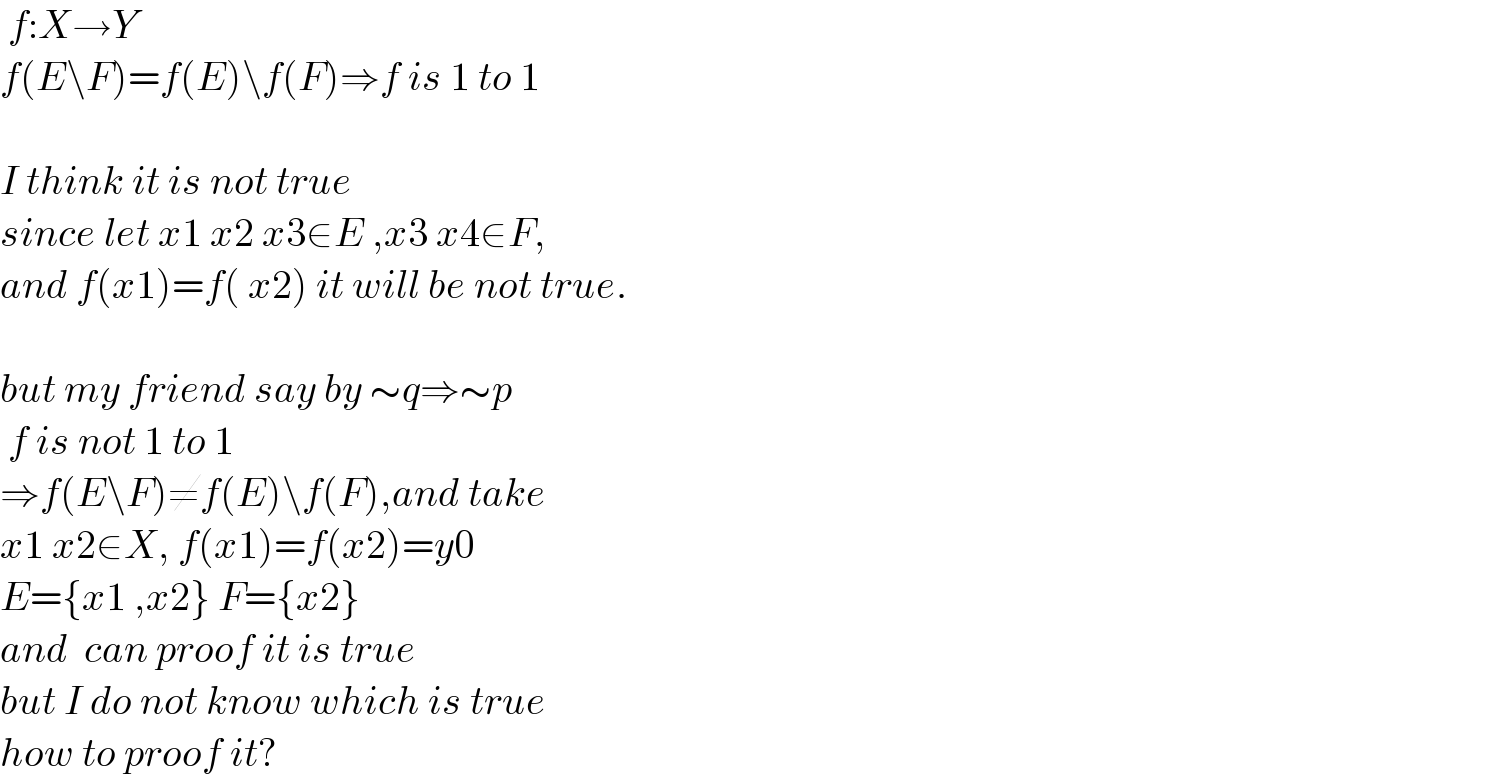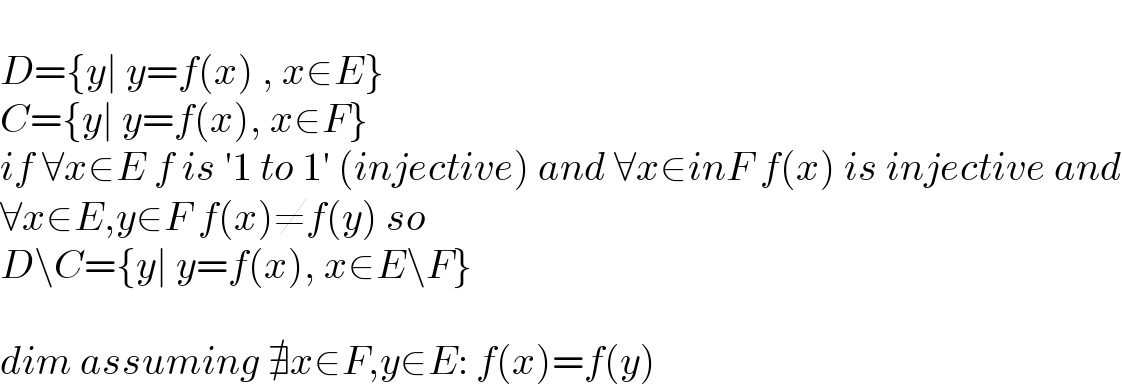Question Number 156128 by aaaspots last updated on 08/Oct/21

Answered by TheSupreme last updated on 08/Oct/21

Commented by aaaspots last updated on 08/Oct/21

Commented by aaaspots last updated on 08/Oct/21

Commented by TheSupreme last updated on 08/Oct/21
![f(x) is 1 to 1 only if the proposition (1) is true for all E,F ∈ D[f(x)] D is dominium, prop 1 is your question](https://www.tinkutara.com/question/Q156163.png)
